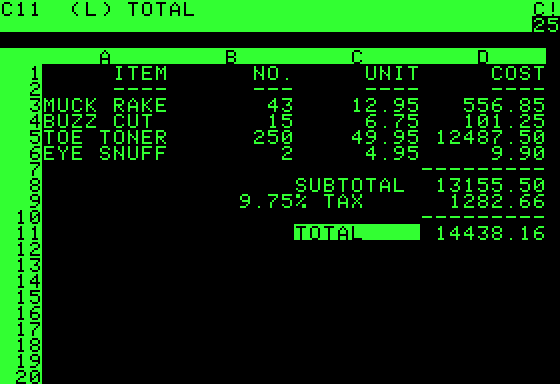In today’s world, electronic spreadsheets are a staple in business and finance, enabling us to crunch numbers, analyze data, and create organized reports effortlessly. However, there was a time when these tasks were performed manually, often with the assistance of mainframe computers. That all changed in 1979 with the introduction of VisiCalc, the first electronic spreadsheet software for personal computers. Developed by Dan Bricklin and Bob Frankston, VisiCalc revolutionized the way we work with numbers and played a pivotal role in the growth of the personal computer industry.
In the late 1970s, Dan Bricklin, a student at Harvard Business School, recognized the need for a better way to perform financial calculations and analyze data. Inspired by a lecture about the benefits of electronic spreadsheets, Bricklin envisioned a software program that would bring the power of automated calculations and analysis to personal computers. Teaming up with Bob Frankston, a software developer and friend, Bricklin set out to turn his vision into reality.
Released in 1979 for the Apple II computer, VisiCalc introduced a host of groundbreaking features that forever changed the landscape of personal computing. At its core, VisiCalc was an electronic spreadsheet application that allowed users to create tables of data, define formulas, and establish relationships between cells. This allowed for automatic recalculation of results whenever the input data changed, saving users significant time and effort.
The impact of VisiCalc on the personal computer industry cannot be overstated. Prior to its release, financial calculations and data analysis were predominantly done manually or relied on expensive mainframe computers, making them inaccessible to many. VisiCalc democratized these processes, putting powerful computational capabilities in the hands of everyday users. It empowered non-programmers to perform complex calculations, plan budgets, and explore “what-if” scenarios without relying on specialized software or expert assistance.
VisiCalc’s impact on businesses and industries was swift and profound. The ability to manipulate numbers and generate reports quickly and accurately made VisiCalc an invaluable tool for financial professionals, planners, and analysts. It transformed financial modeling, budgeting, and decision-making processes, allowing for greater efficiency and accuracy in business operations. As a result, VisiCalc became widely adopted, making the Apple II computer an essential tool for professionals in various fields.
VisiCalc paved the way for subsequent spreadsheet applications, such as Lotus 1-2-3 and Microsoft Excel, which built upon its foundations and expanded the capabilities of electronic spreadsheets. These later iterations introduced features like graphing, macros, and advanced data analysis tools, further enhancing the usefulness of spreadsheet software. Even today, electronic spreadsheets remain an indispensable part of our personal and professional lives, and it all began with the visionary software known as VisiCalc.
VisiCalc’s introduction in 1979 marked a turning point in personal computing. Its ability to perform automated calculations and organize data through electronic spreadsheets revolutionized the way we work with numbers. VisiCalc empowered individuals and businesses, democratizing financial analysis and modeling and accelerating the growth of the personal computer industry. Although newer and more feature-rich spreadsheet applications exist today, VisiCalc will always hold a special place as the trailblazer that changed the world of personal computing forever.
